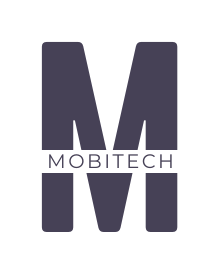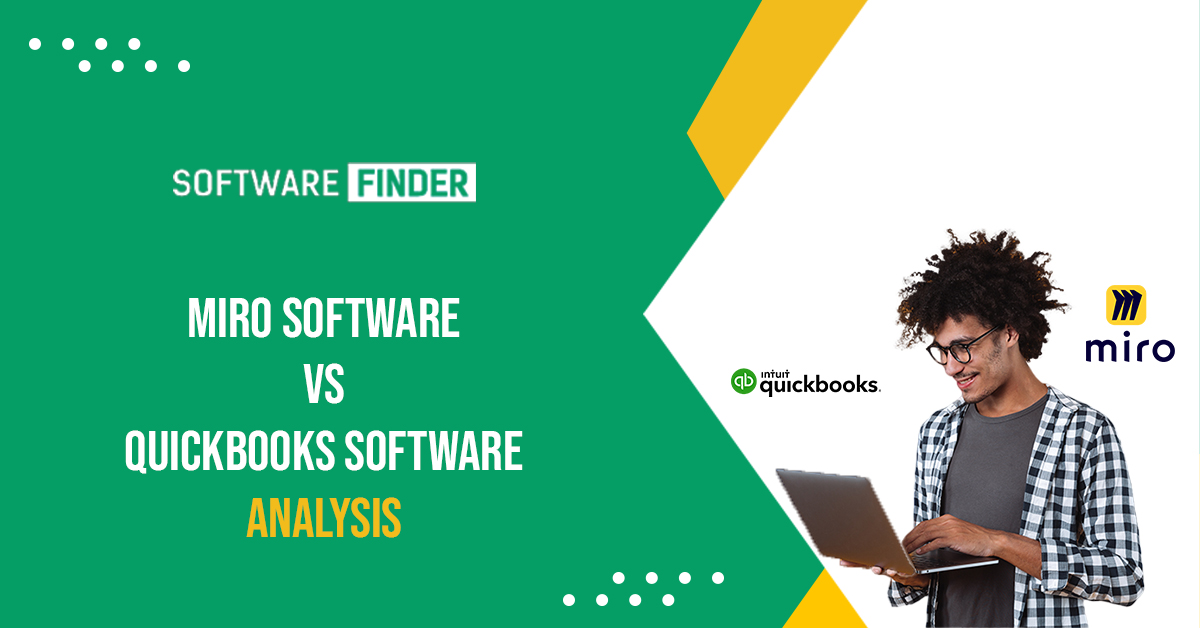In today’s fast-paced business environment, choosing the right software for your specific needs is crucial. Two popular options that cater to different aspects of business operations are Miro Software and Quickbooks Software. While Miro Software focuses on visual collaboration and project management, Quickbooks Software is renowned for its accounting and financial management capabilities. In this article, we will delve into the features, pricing, pros and cons, use cases, and more to help you make an informed decision.
In the realm of business software, Miro and Quickbooks are both widely recognized for their respective functionalities. Miro Software, a collaborative online whiteboard platform, enables teams to collaborate visually, brainstorm ideas, and streamline project management. On the other hand, Quickbooks Software is a comprehensive accounting software designed to handle invoicing, bookkeeping, expense tracking, and tax preparation.
Miro Software
Miro Software provides an interactive digital canvas that empowers teams to collaborate seamlessly, irrespective of their physical location. The platform enables real-time collaboration and offers a range of features to enhance productivity and creativity. With Miro, teams can create, share, and edit boards, allowing for easy visualization of ideas, workflows, and projects.
Quickbooks Software
Quickbooks Software, developed by Intuit, is a powerful financial management tool that caters to businesses of all sizes. It simplifies accounting processes, automates bookkeeping tasks, and provides insights into a company’s financial health. Quickbooks offers a user-friendly interface, making it accessible to both accounting professionals and business owners with limited financial knowledge.
Key Features of Miro Software
Collaboration Tools
Miro Software offers a diverse set of collaboration tools to facilitate teamwork and idea sharing. Features like real-time commenting, @mentions, and task assignments ensure smooth communication within teams. Additionally, Miro integrates with popular project management tools, enabling seamless collaboration across different platforms.
Visual Collaboration
One of the standout features of Miro Software is its visual collaboration capabilities. The platform provides an extensive library of templates, shapes, and sticky notes, allowing users to create diagrams, mind maps, and wireframes effortlessly. With Miro, teams can visualize complex concepts, conduct interactive workshops, and foster creativity.
Integration Capabilities
Miro Software integrates with various third-party applications and platforms, making it a flexible choice for teams already using specific tools. Integration with project management software, cloud storage services, and communication platforms such as Slack and Microsoft Teams enhances the overall workflow efficiency. This seamless integration ensures that teams can work with their preferred tools while utilizing the collaborative power of Miro.
Project Management
Miro Software offers robust project management features that allow teams to plan, track progress, and manage tasks effectively. The platform enables the creation of project timelines, Kanban boards, and Gantt charts, providing a visual representation of project milestones and deadlines. With features like task assignments, due dates, and progress tracking, Miro simplifies project management and promotes transparency within teams.
Agile Workflows
For teams following agile methodologies, Miro Software provides dedicated features to support agile workflows. From creating user stories and conducting sprint planning to visualize agile boards and retrospectives, Miro enables teams to implement agile practices seamlessly. This ensures better collaboration, faster decision-making, and improved overall productivity.
Key Features of Quickbooks Software
Accounting and Bookkeeping
Quickbooks Software is renowned for its comprehensive accounting and bookkeeping capabilities. It offers features like expense tracking, income and expense categorization, invoice management, and bank reconciliation. With Quickbooks, businesses can streamline their financial processes, track income and expenses accurately, and generate financial reports effortlessly.
Invoicing and Payments
Efficient invoicing and payment management are vital for any business. Quickbooks Software provides a user-friendly interface for creating professional invoices, customizing invoice templates, and sending them directly to clients. It also enables businesses to accept online payments, simplifying the payment collection process and improving cash flow management.
Expense Tracking
Tracking expenses is essential for maintaining financial stability. Quickbooks Software allows businesses to track expenses by capturing receipts, categorizing expenses, and linking them to specific projects or clients. The platform also provides detailed expense reports, giving businesses valuable insights into their spending patterns and helping with budgeting decisions.
Tax Preparation
Preparing and filing taxes can be a daunting task, but Quickbooks Software simplifies the process. It provides tools for calculating and filing taxes accurately, ensuring compliance with tax regulations. Quickbooks also integrates with popular tax preparation software, making it easier for businesses to transfer financial data and streamline the tax filing process.
Reporting and Analytics
Quickbooks Software offers robust reporting and analytics features, allowing businesses to gain insights into their financial performance. Users can generate various reports, including profit and loss statements, balance sheets, and cash flow statements. These reports provide a clear overview of a company’s financial health, enabling better decision-making and strategic planning.
Pricing and Plans
Miro Software Pricing
Miro Software offers different pricing plans to cater to the needs of various businesses and teams. The plans include a free basic plan with limited features, as well as premium plans with additional functionalities, such as advanced security measures, unlimited boards, and team collaboration features. The pricing is tiered based on the number of users and additional features required.
Quickbooks Software Pricing
Quickbooks Software offers several pricing plans, tailored to meet the requirements of different businesses. The plans range from basic options designed for freelancers and self-employed individuals to more advanced plans for small and medium-sized businesses. The pricing structure depends on factors like the number of users, required features, and integration options.
Pros and Cons of Miro Software
Pros
- Powerful visual collaboration capabilities
- Seamless integration with popular project management tools
- User-friendly interface and intuitive navigation
- Extensive template library for quick and easy visualization
- Real-time collaboration and commenting features
Cons
- Steeper learning curve for users unfamiliar with visual collaboration tools
- Limited advanced features in the free basic plan
- Pricing can be expensive for larger teams or organizations
Pros and Cons of Quickbooks Software
Pros
- Comprehensive accounting and bookkeeping features
- User-friendly interface and easy-to-navigate platform
- Integration with various banking institutions for streamlined financial management
- Robust reporting and analytics capabilities
- Scalable options to accommodate businesses of different sizes
Cons
- Some advanced features may require additional fees or higher-tier plans
- Limited customization options for invoice templates
- Customer support response times can vary
Use Cases and Industries
Miro Software Use Cases
- Remote and distributed teams collaborating on projects and brainstorming sessions
- Design and creative teams creating wireframes, user flows, and visual prototypes
- Agile teams managing sprints, backlogs, and retrospectives
- Sales and marketing teams visualizing strategies, campaigns, and customer journeys
Quickbooks Software Use Cases
- Small businesses and startups managing their accounting and bookkeeping processes
- Freelancers and self-employed professionals tracking income and expenses
- Retail and e-commerce businesses handling invoicing and inventory management
- Accounting firms and professionals providing financial services to clients
Integration Capabilities
Both Miro Software and Quickbooks Software offer integration capabilities to enhance their functionality and integrate with other tools commonly used in business operations. Miro integrates with project management platforms like Jira, Trello, and Asana, as well as communication tools like Slack and Microsoft Teams. Quickbooks integrates with popular e-commerce platforms, payment gateways, and banking institutions, ensuring seamless data transfer and enhanced financial management.
User Experience and Interface
Miro Software provides a visually appealing and intuitive interface that encourages collaboration and creativity. Its drag-and-drop functionality, easy-to-use tools, and customizable templates make it accessible to users of all levels of expertise. Quickbooks Software also offers a user-friendly interface with a dashboard that provides a comprehensive overview of financial data. The platform’s clean design and straightforward navigation make it easy for users to navigate through different features and modules.
Customer Support and Resources
Miro Software offers various customer support options, including a comprehensive knowledge base, video tutorials, and a community forum where users can ask questions and share best practices. They also provide email support and offer dedicated support for enterprise customers. Quickbooks Software offers customer support through phone, chat, and email, ensuring timely assistance for any issues or questions. Additionally, they provide a rich library of resources, including help articles, video tutorials, and webinars to help users maximize the software’s capabilities.
Security and Data Privacy
Both Miro Software and Quickbooks Software prioritize the security and privacy of user data. They implement industry-standard security measures, including encryption protocols, access controls, and regular data backups. Miro Software allows users to control board access permissions, ensuring only authorized individuals can view and edit sensitive information. Quickbooks Software adheres to strict data privacy regulations and offers features like multi-factor authentication and secure data transmission to protect sensitive financial information.
Comparison and Verdict
In comparing Miro Software and Quickbooks Software, it is important to consider the specific needs and requirements of your business. If your primary focus is visual collaboration, brainstorming, and project management, Miro Software offers powerful features and integrations tailored for such purposes. On the other hand, if your business requires robust accounting, bookkeeping, and financial management capabilities, Quickbooks Software is a comprehensive solution that can streamline your financial processes. Ultimately, the choice between the two depends on the specific needs and priorities of your business.
Conclusion
In conclusion, Miro Software and Quickbooks Software are both valuable tools that cater to different aspects of business operations. Miro Software excels in visual collaboration, project management, and agile workflows, making it an ideal choice for creative and remote teams. Quickbooks Software offers comprehensive accounting, bookkeeping, and financial management features, catering to the needs of small businesses, freelancers, and accounting professionals. By understanding the key features, pricing





